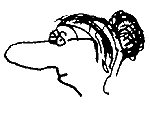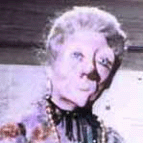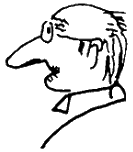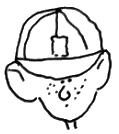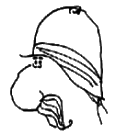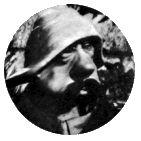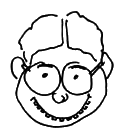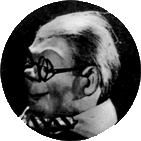|
|||||||||||||||||||||||||||||||||||||||||||
| Contents of this Chapter: | |||||||||||||||||||||||||||||||||||||||||||
| Introduction... Radio's Crazy Gang--"The Goons" (...includes a list of the BBC Goon CDs) Goon Shows Preserved While You Wait... The Wonder of Ultra-Kendall-Vision... Running Jumping & Standing Still... Let's See Them Do That On Television! Voice Actors, Puppeteers & Producers... Go Ask Eccles & Bluebottle... The Persistence of Goon Memory... Neddie Seagoon Puppet Restoration Fund... |
|||||||||||||||||||||||||||||||||||||||||||
|
|
|||||||||||||||||||||||||||||||||||||||||||
Telegoon Toon Time... |
|||||||||||||||||||||||||||||||||||||||||||
| Thus it happened that two
years after the last regular
Goon Show was broadcast, twenty-six Goon Show radio scripts were shortened and re-worked by television scriptwriter Maurice Wiltshire, to make them into a series of fifteen-minute puppet films that would work within the limitations of the television screen. Probably
a little ahead of their time, the films were intended to be not only the
first puppet series on television for adults, but also the first puppet
series that was intentionally funny.
Wiltshire?s qualifications for The Telegoons script editing job included having co-written several Goon Shows with Larry Stephens when the writing pressure had become too much for Spike (G.S. 8th series #15, #17, #19, and 9th series #7). Far from being just cut down versions of Goon Show scripts, Maurice Wiltshire?s rewrites for the Telegoon puppets added a lot of new humour, much of which was highly visual, and all of which seems completely in tune with the style of the puppets and the Goon characters on which they are based. Each episode was given an amusing opening sequence (opening sketch) usually having absolutely nothing to do with the main plot, and presumably intended to warm up the viewing audience. One particularly memorable such opening occurs in The Hastings Flyer (T.G. 1st series, #9) for which an annotated script excerpt follows: The Hastings Flyer Opening Sequence
Perhaps the main obstacle for The Telegoons was not the production process itself, but more how to deal with Spike's oft-repeated Goon Show challenge, ?Let's see them do that on television!? No self-respecting television version of The Goon Show could ever let itself be outdone by a mere radio show! Maurice Wiltshire rose to the challenge, and contrived scenes for the television Goon puppets which would be difficult, if not impossible to do on radio! What very well may be his pi?ce de r?sistance, is the very amusing opening sequence in The Telegoons version of Napoleon's Piano (T.G. 1st series, #4). And it is my belief that unless radio is someday improved by the transmission of supplementary visuals (perhaps via simulcast?), this opening sequence will remain impossible to do on radio. Funnily enough, the printed word in the form of a script (a communications method which is much older than radio) is fairly adequate for conveying visual humour. The sequence under discussion concerns one of the many hazards of lighthouse keeping (which, as pointed out by announcer Grytpype-Thynne, ?has nothing to do with the story that is about to follow.?). The whole sequence is completely visual except for the sound of footsteps and a ringing telephone, proving that Goon-type humour is not limited to the radio format, despite the refrain from the hard core, that ?It?s all in the mind, you know!? Incidentally, nowhere in Maurice Wiltshire?s television adaptation of Napoleon?s Piano is the word ?radio? used. Wiltshire was more subtle than that, as you can see from the script: Napoleon's Piano Opening Sequence
One of the biggest problems for the producers and for Spike Milligan must have been deciding what the puppets should look like, since every Goon Show listener has their own mental image of the characters. On the other hand, who should know better than the Goons themselves what the Goon Show characters really look like? Tony Young did not have to search far for ideas, since Spike and the other Goons had over the years adorned their radio scripts with sketches of characters such as Neddie Seagoon, Eccles, Bluebottle, Minnie Bannister, and Henry Crun. But in the end, and probably because he was the most interested in the puppet project, it was Spike Milligan who provided the creative inspiration as well as the final approval for the look of the puppets. It is not known who made the original sculptures for the puppet heads (which were typically made then, as today, using modeling clay or plasticine, from which plaster molds for the foam latex process would be cast). However, given Tony Young?s remark, that it had cost him a fortune to have the sculpting done, we can infer that the sculpting was not done by Tony?s father Ralph. Ann Perrin (daughter of Ron Field, and puppeteer on the pilot film and later episodes) says that the sculpting was not done in the Field Puppets workshop, so that also rules out Ron Field as sculptor. Most likely this part of the puppet making process was farmed out to a professional artist. On the other hand, Ron and Ralph probably handled the molding of the foam latex rubber for the puppet heads. The highly technical job of developing the Telegoon puppets and all of their internal mechanisms fell primarily to Ron Field and Ralph Young. Ron brought his many years of professional experience as puppeteer and puppet builder to the project. Ralph Young (father of director Tony Young), who Tony described as ?an inventor,? must also have had puppet building expertise, but this has not yet been confirmed. David Young, who was Tony Young?s younger brother, helped with the building of the puppets, and was given the task of supervising them during the production of the series. Ron Field also brought to the project a unique electronic lip-synch technology which he had developed in the late 1950s with the assistance of electrical engineer Chris Meader (click here for more details). But not satisfied with just lip-synch, Ron Field and Ralph Young developed additional electromechanical systems which enabled some of the larger Telegoon puppets to wink, blink, or close both eyes, using electrical trigger switches controlled by the puppeteer. The puppet?s eyes could also be moved to the left or the right, but this was done mechanically, using a thumb lever mounted on the main head control rod. When all of these technologies were combined with flexible latex foam rubber cheeks, mouths and necks, the overall effect was a very realistic simulation of human mouth and facial movements during the simulation of speech. The high degree of realism achieved in his way was an important part of Ron Field?s 1961 patent applications, which were granted in 1964 (see Ron?s bio page for more details). Unfortunately, due to a long-running dispute with the producers over the terms of use of Ron?s electronic puppet lip-synch technology, the technology was not fully utilised until the second filming series. Lip-synch in the earlier episodes was achieved manually using an electrical trigger switch connected to the solenoid circuit, which required the puppeteers to spend extra rehearsal time learning the speech syllables. Ron?s wife Joan Field, advised on the puppets? costumes and adapted Major Bloodnok?s uniform to ensure he could meet the requirements of the director. The puppets? hands and Eccles? worn-out-looking boots were made in the Field Puppets workshop. Ron and Joan Field?s daughter Ann had the task of stringing all the marionettes. Ron, Joan, and Ann Field were the puppeteers for the pilot film, which was successful in securing funding for the series from the BBC. The animation inserts for The Telegoons films were made by Peter Firmin and Oliver Postgate, of Smallfilms Ltd., Kent. Some of these inserts, such as the herd of wild animals rushing out of the house in The Canal (T.G. 1st series, #7), are quite reminiscent of similar animations done years later by Monty Python?s Flying Circus. One production problem to be solved was that the Smallfilms inserts were shot on 16 mm film, while The Telegoons films themselves were shot on 35 mm. Lending a final polish to the production was a very memorable signature tune named Telegoon Toon, written by established light music composer Edward G. White (1910-1994), and performed by the BBC?s own Big Ben Banjo Band (you have probably already heard a short clip of this tune on the Splash page; there?s also a longer clip in the Merchandise section). Ed White?s company Musicus Ltd., also composed all of the musical tracks used in the series. |
|
||||||||||||||||||||||||||||||||||||||||||

